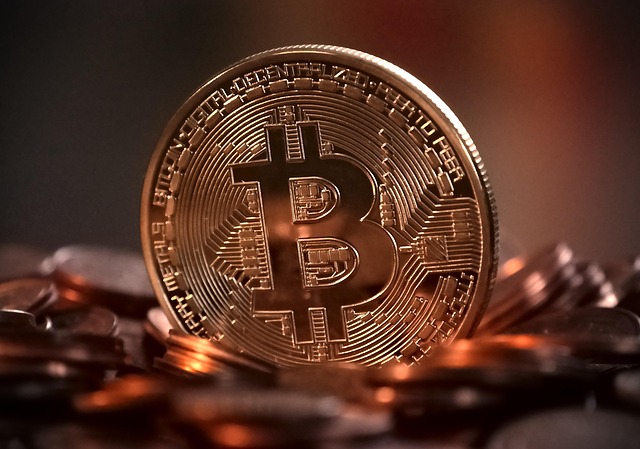Bitcoin enters world's top 5 largest assets, surpassing Google, Silver, Amazon
Bitcoin (BTC) has overtaken Alphabet (Google) to become the world’s fifth most valuable asset by market capitalization.As of April 23, Bitcoin’s market cap surged to $1.87 trillion, edging past Alphabet’s $1.859 trillion valuation, according to asset ranking data. BTC is now behind only gold, Apple, Microsoft and Nvidia.Top assets by market cap. Source: CompaniesMarketCap.comBitcoin beats Nasdaq 100 returns in AprilBitcoin’s edge over Alphabet coincides with its ongoing “decoupling” from its long-standing correlation with US tech stocks, especially in April, when BTC’s price rallied 15% despite the Nasdaq 100’s returns of 4.50% in the same period.BTC/USD and Nasdaq 100 price comparison chart. Source: TradingViewThis decoupling followed months of disappointment for crypto bulls, who expected a stronger post-election rally.Even with April’s gains, BTC’s price remains 16% below its $109,000 all-time high set in January, when Trump was re-inaugurated as the US president.Source: Geiger CapitalTrump’s recent criticism of Federal Reserve Chair Jerome Powell and his executive order to create a Strategic Bitcoin Reserve (SBR) — which is nearing its 60-day review window — is helping reignite investor interest in crypto.Related: Bitcoin could hit $1M if US buys 1M BTC — Bitcoin Policy Institute“Chatter questioning Fed independence is having positive spillover effects on BTC,” said Vetle Lunde, head of research at K33.Macro analyst Fejau stressed that capital outflows from US assets will likely benefit Bitcoin, given countries can’t tariff it — and that it “provides high beta to a portfolio without the current tail risks associated with US tech.”“This market regime is what Bitcoin was built for,” he wrote, adding:“One the degrossing dust settles, it will be the fastest horse out of the gate.Bitcoin market worth more than two TeslasAlphabet is facing headwinds in the form of regulatory crackdowns, antitrust challenges and a slowdown in digital ad revenue. The rise of AI-focused rivals and reduced growth projections have also dented confidence in Google’s long-term dominance.Source: The Japan TimesTo put Bitcoin’s $1.87 trillion valuation into perspective, it’s now worth more than two Tesla companies.The EV giant famously added Bitcoin to its balance sheet in early 2021, when it was trading for around $33,500. It is now sitting on around 180% gains worth over $1 billion.This article does not contain investment advice or recommendations. Every investment and trading move involves risk, and readers should conduct their own research when making a decision.
Coinbase to hire 130+ staff as it expands into Charlotte’s fintech hub
Crypto exchange giant Coinbase is set to expand its footprint by hiring over 130 employees in Charlotte, North Carolina, as part of a broader push to tap into emerging fintech talent pools across the US, a company spokesperson confirmed to Cointelegraph.“Coinbase is making a new investment in Charlotte with a new physical office and an immediate commitment to hire for 130+ local roles across both Compliance and Customer Support over the next six months,” the spokesperson said.They added that Coinbase’s focus on Charlotte is in response to the city’s emergence as a key financial and tech center, making it a prime choice for expansion to address increasing customer and compliance demands.With a fast-growing population and a highly skilled talent pool, Charlotte offers an ideal setting to support Coinbase’s long-term growth, the spokesperson said.Related: Coinbase Derivatives lists XRP futuresCoinbase remains a remote-first companyCoinbase has operated as a remote-first company since 2020, with existing offices in San Francisco and New York.“We are still a remote-first company; however, we have some roles globally that are in office due to the nature of the role and our focus on how we can best deliver for our customers,” the spokesperson said.They added that around 95% of Coinbase’s employees have the option to work from home, an office, or a mix. The bigger picture here is we’re making an intentional push to meet top talent where they are.Related: Paul Atkins’ loosely linked RSR token rises 13% after Coinbase listingThe move comes as Coinbase CEO Brian Armstrong outlined plans to add about 1,000 new US employees this year, driven by favorable regulatory signals from President Donald Trump’s pro-crypto administration.“Coinbase is planning to hire about 1,000 people in the United States this year as a direct result of his actions already in the first 60 days or so,” Armstrong said in a video posted to X on March 7.Armstrong revealing hiring intentions outside the White House. Source: Brian ArmstrongAdding 1,000 more employees would increase Coinbase’s total workforce by about 27%, according to Stockanalysis’ most recent data, which shows that the crypto exchange currently has 3,772 employees.The new expansion plans also come as Coinbase has confirmed that it is considering applying for a US federal bank charter.Magazine: Former Love Island star’s tips on how to go viral in crypto: Van00sa, X Hall of Flame
$635M liquidated in 24H as trader predicts $100K Bitcoin short squeeze
Crypto markets have faced a wave of liquidations over the past 24 hours, with total losses reaching $635.9 million, according to market data. Most of the liquidations (over $560 million) came from short positions, signaling growing pressure on bearish traders.Bitcoin (BTC) led the liquidation charts, with $293 million in short positions wiped out as BTC surged past $94,000, marking a 6.29% gain within one day, according to CoinGlass data.Ether (ETH) followed, with over $109 million in short liquidations as its price climbed nearly 10% to $1,787.Data from exchanges showed Binance accounted for the largest share of liquidations at $18.7 million in the last four hours, with 78% of that targeting short positions. Bybit and OKX also saw significant liquidation volumes, reflecting widespread volatility across major platforms.Crypto market sees a wave of liquidations. Source: CoinGlassRelated: Bitcoin breaks downtrend with spike toward $92.6K, but who’s behind the price momentum?Trader says Bitcoin liquidity building around $100,000 levelAmid the market turbulence, crypto analyst Mister Crypto noted that liquidity is “piling up around $100,000” for Bitcoin.In a recent post on X, he warned that bears are showing signs of desperation, suggesting a potential short squeeze could drive BTC closer to the six-figure mark.A short squeeze occurs when a rapid price increase forces traders betting against the market to cover their positions, fueling further upward momentum.Mister Crypto also shared a Binance BTC/USDT Liquidation Heatmap, showing that a large amount of Bitcoin trading activity and liquidation orders are building up around the $100,000 level, meaning many traders have set positions that could be triggered if the price reaches that point.Source: Mister CryptoBitcoin surged to a 45-day high above $94,000 on April 23. The leading cryptocurrency was trading at $94,236, up by more than 6% over the past day, at the time of writing, according to data from CoinMarketCap.Related: Bitcoin price prepares for ‘70% to 80%’ gain as onchain metrics and spot BTC ETF inflows spikeNot everyone believes Bitcoin will hit $100,000 soonHowever, not everyone is optimistic about an imminent Bitcoin surge to $100,000.“Bitcoin’s climb to $94K reflects renewed global optimism, but its path to $100K remains uncertain,” Vincent Liu, chief investment officer at Kronos Research, told Cointelegraph.He said the outcome of the May 6 Federal Open Market Committee (FOMC) meeting, ongoing trade negotiations with India and China, and broader macro conditions will be critical. He added:“Cleared tariffs and potential Fed rate cuts could ignite further momentum, while rate hikes or unresolved tensions may keep BTC range-bound. US monetary policy will be pivotal in determining if Bitcoin reaches this milestone.”Magazine: XRP win leaves Ripple and industry with no crypto legal precedent set
Bitcoin exchange buying is back as 'Spoofy the Whale' lifts $90K asks
Key points:Whales on Binance joins Coinbase in adding BTC exposure as Bitcoin recovers above $90,000.The Coinbase premium is back in the green amid a broad risk-asset relief rally.Resistance attributed to an entity dubbed “Spoofy the Whale” at $90,000 disappears.Bitcoin (BTC) has fresh whale buying pressure across major exchanges as large-volume investors boost BTC price gains.New data from onchain analytics platform CryptoQuant reports both Binance and Coinbase whales “pushing the market up.”Coinbase BTC premium hits highest since FebruaryBitcoin whales are wasting no time adding BTC exposure as BTC/USD hits its highest levels in over six weeks.This is reflected in market data, including the so-called Coinbase premium — the difference in pricing between the BTC/USD pair on the largest US exchange, Coinbase, and Binance’s BTC/USDT equivalent.A positive premium indicates US buyer interest, with current values showing “alternate” demand between Coinbase and Binance.“These two exchanges, which can be considered the largest in the world, have their whales alternately pushing the market up, creating a very positive situation, CryptoQuant contributor Crypto Dan summarized in one of its “Quicktake” blog posts.Coinbase premium index. Source: CryptoQuantCrypto Dan added that retail investors had undergone a shakeout thanks to the recent unpredictable BTC price action.“Recently, most people had shifted their view to a bearish cycle, and public interest had significantly decreased,” he wrote. “Furthermore, with Bitcoin and altcoins in an oversold condition, the market has effectively shaken off the retail investors (the ‘small fish’), which means the market is now ready for a rise.”Mystery whale “relinquished control” of Binance order bookBinance order book data appears to corroborate the theory.Related: US dollar goes ‘no-bid’ — 5 things to know in Bitcoin this weekAs highlighted by Keith Alan, co-founder of trading resource Material Indicators, all classes of whales on Binance have begun buying.In addition, a wall of resistance at $90,000, which Allen previously attributed to an entity he dubbed “Spoofy the Whale,” has vanished.“Spoofy the Whale has relinquished control of the BTC order book on Binance,” he summarized in an X post on April 23.BTC/USDT order book liquidity. Source: Keith AlanXAlan reiterated that Bitcoin still needed a decisive reclaim of its yearly open at around $93,500 to complete a bullish turnaround and leave its multimonth downtrend behind.This article does not contain investment advice or recommendations. Every investment and trading move involves risk, and readers should conduct their own research when making a decision.
Crypto drainers now sold as easy-to-use malware at IT industry fairs
Crypto drainers, malware designed to steal cryptocurrency, have become easier to access as the ecosystem evolves into a software-as-a-service (SaaS) business model.In an April 22 report, crypto forensics and compliance firm AMLBot revealed that many drainer operations have transitioned to a SaaS model known as drainer-as-a-service (DaaS). The report revealed that malware spreaders can rent a drainer for as little as 100 to 300 USDt (USDT).Crypto drainers report image. Source: AMLBotAMLBot CEO Slava Demchuk told Cointelegraph that “previously, entering the world of cryptocurrency scams required a fair amount of technical knowledge.” That is no longer the case. Under the DaaS model, “getting started isn’t significantly more difficult than with other types of cybercrime.”Demchuk explained that would-be drainer users join online communities to learn from experienced scammers who provide guides and tutorials. This is how many criminals involved with traditional phishing campaigns transition to the crypto drainer space.Related: North Korean hackers target crypto devs with fake recruitment testsCybercrime in Russia — almost legalGroups offering crypto drainers as a service are increasingly bold and some are evolving almost like traditional business models, Demchuk said, adding:“Interestingly, some drainer groups have become so bold and professionalized that they even set up booths at industry conferences — CryptoGrab being one such example.“When asked how a criminal operation can send representatives to information technology industry events without repercussions, such as arrests, he pointed to Russian cybercrime enforcement as the reason. “This can all be done in jurisdictions like Russia, where hacking is now essentially legalized if you’re not operating across the post-Soviet space,” he said.The practice has been an open secret in the cybersecurity industry for many years. Cybersecurity news publication KrebsOnSecurity reported in 2021 that “virtually all ransomware strains” deactivate without causing harm if they detect Russian virtual keyboards installed.Similarly, the information stealer Typhon Reborn v2 checks the user’s IP geolocation against a list of post-Soviet countries. According to networking firm Cisco, if it determines that it is located in one of those countries, it deactivates. The reason is simple: Russian authorities have shown that they will act if local hackers hit citizens of the post-Soviet bloc.Related: What is Bitcoinlib, and how did hackers target it?Drainers keep growingDemchuk further explained that DaaS organizations usually find their clientele within existing phishing communities. This includes gray and black hat forums on both clearnet (regular internet) and darknet (deep web), as well as Telegram groups and channels and gray market platforms.In 2024, Scam Sniffer reported that drainers were responsible for about $494 million in losses, a 67% increase over the previous year, despite a 3.7% increase in the number of victims. Drainers are on the increase, with cybersecurity giant Kaspersky reporting that the number of online resources dedicated to them on darknet forums rose from 55 in 2022 to 129 in 2024.Developers are often recruited through normal job adverts. AMLBot’s open-source intelligence investigator, who prefers to remain anonymous for safety reasons, told Cointelegraph that while researching drainers, his team “did come across several job postings specifically targeting developers to build drainers for Web3 ecosystems.”He provided one job advert that described the required features of a script that would empty Hedera (HBAR) wallets. Once again, the offer was mainly targeted at Russian speakers:“This request was originally written in Russian and shared in a developer-focused Telegram chat. It’s a clear example of how technical talent is actively recruited in niche, often semi-open communities.“The investigator further added that ads like this appear in Telegram chats for smart-contract developers. Those chats are not private or restricted, but they are small, with usually 100 to 200 members.Administrators quickly deleted the announcement provided as an example. Still, “as is often the case, those who needed to see it had already taken note and responded.”Traditionally, this kind of business was conducted on specialized clearnet forums and deep web forums accessible through the Tor network. Still, the investigator said that much of the content moved to Telegram thanks to its policy against sharing data with authorities. This changed following the arrest of Telegram CEO Pavel Durov:“As soon as Telegram announced that it was giving out data, then the outflow to Tor started again, because it is easier to protect oneself there.”Still, this is a concern to cybercriminals that may no longer be relevant. Earlier this week, Durov expressed misgivings over a growing threat to private messaging in France and other European Union countries, warning that Telegram would rather exit certain markets than implement encryption backdoors that undermine user privacy.Magazine: As Ethereum phishing gets harder, drainers move to TON and Bitcoin
Bitcoin ETFs log $912M inflows in ‘dramatic’ investor sentiment boost
Investments in Bitcoin exchange-traded funds (ETFs) have rebounded to levels last seen in January, signaling a recovery in investor sentiment from concerns around global trade tariff escalations.US spot Bitcoin (BTC) ETFs had over $912 million worth of cumulative net inflows on April 22, marking their highest daily investment in more than three months since Jan. 21, Farside Investors data shows.Bitcoin ETF Flow, millions. Source: Farside Investors“Bitcoin ETPs just saw the largest daily inflows since 21st January in a dramatic improvement in sentiment,” according to James Butterfill, head of research at CoinShares.Related: Bitcoin still on track for $1.8M in 2035, says analystInvestor sentiment appeared to improve after US President Donald Trump said that import tariffs on Chinese goods will “come down substantially,” adopting a softer tone in negotiations.The de-escalation and growing ETF inflows pushed Bitcoin price above $93,000 for the first time in seven weeks, Cointelegraph reported on April 23.The growing institutional investment and presence of ETFs may also accelerate the historic four-year cycle and bolster BTC to new highs before the end of 2025, analysts told Cointelegraph.US dollar weakness may reinforce Bitcoin’s safe-haven appealThe US dollar’s weakness may also contribute to the growing investor demand for Bitcoin. DXY, year-to-date chart. Source: Cointelegraph/TradingView The US Dollar Index (DXY), which measures the strength of the greenback against a basket of leading fiat currencies, fell nearly 9% since the beginning of 2025, to an over three-year low of 98.8 last seen in April 2022, TradingView data shows.“Macro factors like a weakening dollar and rising gold correlation,” may reinforce Bitcoin’s appeal as a hedge against economic volatility, Ryan Lee, chief analyst at Bitget Research, told Cointelegraph.Related: Crypto, stocks enter ‘new phase of trade war’ as US-China tensions riseBitcoin no longer trading in the “shadow of tech”Crypto and traditional stock markets are “walking a tightrope between political drama and economic reality,” with Bitcoin staging a significant rebound thanks to “strong ETF inflows, institutional acquisitions, and a weakening US dollar,” according to Nexo dispatch analyst Iliya Kalchev:“Bitcoin’s strength amid dollar weakness, record gold prices, and renewed institutional buying reflects a market recalibrating what safety looks like.”“The conversation has clearly shifted. Bitcoin is no longer trading in the shadows of tech — it’s becoming a lens through which macro uncertainty is priced,” he added.Nansen CEO Alex Svanevik also praised Bitcoin’s resilience, noting that the maturing asset is becoming “less Nasdaq — more gold” over the past two weeks, increasingly acting as a safe haven asset against economic turmoil, but concerns over economic recession may limit its price trajectory.On April 21, BitMEX co-founder Arthur Hayes predicted that this might be the “last chance” to buy Bitcoin below $100,000, as the incoming US Treasury buybacks may signal the next significant catalyst for Bitcoin price.Magazine: Bitcoin’s odds of June highs, SOL’s $485M outflows, and more: Hodler’s Digest, March 2 – 8Investments in Bitcoin exchange-traded funds (ETFs) have resurged to January’s levels, signaling a significant recovery in investor sentiment from the concerns related to global trade tariff escalations.The US spot Bitcoin (BTC) ETFs received over $912 million worth of cumulative net inflows on April 22, marking the highest daily investment in over three months since Jan. 21, Farside Investors data shows.Bitcoin ETF Flow, millions, Farside Investors“Bitcoin ETPs just saw the largest daily inflows since 21st January in a dramatic improvement in sentiment,” wrote James Butterfill, head of research at CoinShares, in an April 23 X post.Related: Bitcoin still on track for $1.8M in 2035, says analystInvestor sentiment was significantly improved after US President Donald Trump said that import tariffs on Chinese goods will “come down substantially,” showcasing a softer tone in negotiations.The notable de-escalation and the growing ETF inflows pushed Bitcoin price above $93,000 for the first time in seven weeks, Cointelegraph reported on April 23.The growing institutional investment and presence of ETFs may accelerate the historic four-year cycle and bolster Bitcoin to new highs before the end of 2025, analysts told Cointelegraph.Related: Crypto, stocks enter ‘new phase of trade war’ as US-China tensions riseBitcoin no longer trading in the “shadow of tech”Crypto and traditional stock markets are “walking a tightrope between political drama and economic reality,” with Bitcoin staging a significant rebound thanks to “strong ETF inflows, institutional acquisitions, and a weakening USD,” according to Nexo dispatch analyst Iliya Kalchev.The analyst told Cointelegraph, adding:“Bitcoin’s strength amid dollar weakness, record gold prices, and renewed institutional buying reflects a market recalibrating what safety looks like.”“The conversation has clearly shifted. Bitcoin is no longer trading in the shadows of tech — it’s becoming a lens through which macro uncertainty is priced,” the analyst added.Nansen CEO Alex Svanevik also praised Bitcoin’s resilience, noting that the maturing asset is becoming “less Nasdaq — more gold” over the past two weeks, increasingly acting as a safe haven asset against economic turmoil, but concerns over economic recession may limit its price trajectory.On April 21, BitMEX co-founder Arthur Hayes predicted that this might be the “last chance” to buy Bitcoin below $100,000, as the incoming US Treasury buybacks may signal the next significant catalyst for Bitcoin price.Magazine: Bitcoin’s odds of June highs, SOL’s $485M outflows, and more: Hodler’s Digest, March 2 – 8
Binance tightens South African compliance rules for crypto transfers
Binance is set to implement new compliance measures for South African users, requiring sender and receiver information for all crypto deposits and withdrawals.In an announcement on April 23, the largest exchange in terms of daily trading volume of cryptocurrencies said the move comes in response to local regulatory demands.Starting April 30, Binance users in South Africa will be prompted to provide additional information when transferring crypto.For deposits, users must disclose the sender’s full name, country of residence, and, if applicable, the name of the originating crypto exchange. Similarly, withdrawals will require beneficiary details before processing.Binance to require information for all crypto transfers in South Africa. Source: BinanceThe update will only impact crypto deposits and withdrawals, leaving trading and other platform features unaffected.Related: US judge transfers Binance lawsuit to Florida, citing first-to-file ruleMissing transfer details may reverse transactionsBinance warned that failure to provide the required information may result in delayed transactions or, in some cases, a return of funds to the sender.In preparation for the rollout, users will need to re-login to their accounts starting April 24.The change comes as South Africa moves to boost oversight of the rapidly moving crypto sector.On April 2, Bloomberg reported that South Africa’s Revenue Service (SARS) is urging individuals, crypto exchanges and intermediaries involved in crypto transactions to register with the authority, warning that failure to do so is now illegal.In March, the Financial Sector Conduct Authority (FSCA) of South Africa issued a public warning against two unlicensed crypto firms, Afriinvest and Mutualwealth, accusing them of soliciting investments while promising unrealistic returns of up to 10,000 rand ($542) per day.Related: Binance, KuCoin, MEXC report service issues due to AWS network interruptionSouth Africa pushes to become key crypto hubEmerging economies across Africa, particularly South Africa, are positioning themselves as potential digital asset hubs amid growing regulatory clarity, Ben Caselin, chief marketing officer (CMO) of Johannesburg-based crypto exchange VALR, told Cointelegraph in September 2024.Caselin said that South Africa’s strong legal framework and ease of business make it a key entry point for crypto expansion across the continent.The South African crypto market is projected to generate $278 million in revenue in 2025, with expectations to grow at a compound annual growth rate (CAGR) of 7.86% and reach $332.9 million by 2028, according to Statista.Revenue in South Africa’s crypto market is expected to grow by 7.86% by 2028. Source: StatistaRegulatory momentum is increasing, with the FSCA approving 59 crypto platform licenses in March 2024, while over 260 applications remain under review.Cointelegraph contacted Binance for comments but did not receive a response by publication.Magazine: Former Love Island star’s tips on how to go viral in crypto: Van00sa, X Hall of Flame
What are spot Solana ETFs with staking? Canada’s crypto innovation explained
What are spot Solana ETFs and why are they important? A spot Solana ETF is an exchange-traded fund that holds Solana (SOL) tokens directly, providing investors real-time exposure to the asset’s market price. Rather than using complex trading platforms or crypto wallets, you can access Solana via a regulated financial product traded on a traditional stock exchange. The value of Solana ETFs is directly tied to the open market price of SOL, offering a simple way to gain exposure to the blockchain’s performance without directly holding the asset. Unlike futures-based ETFs that use derivative contracts to speculate on Solana’s future prices, a spot ETF tracks the performance of the actual asset. This distinction is significant because futures products may face pricing inefficiencies, leading to performance mismatches over time. Spot ETFs are more transparent and directly reflect SOL’s real-time supply and demand on the Solana blockchain.Spot Solana ETFs mark a significant step toward mainstream crypto adoption. These products enable retail and institutional investors to gain exposure to the Solana ecosystem while operating within the bounds of securities regulations.Like spot Bitcoin and Ethereum ETFs, spot Solana exchange-traded funds are expected to expand market access and serve as another entry point to decentralized finance (DeFi) for traditional investors.Did you know? Spot ETFs aim to mirror an asset’s current price by directly holding the asset, while futures ETFs use derivative contracts to speculate on future price movements. Launch of spot Solana ETFs on the Toronto Stock Exchange On April 16, 2025, four spot Solana ETFs started trading on the Toronto Stock Exchange, following approval from the Ontario Securities Commission (OSC). With this, Canada became the first country to launch spot SOL ETFs with staking. The OSC granted approval to the spot Solana ETFs of four asset managers: 3iQ, Purpose, Evolve and CI Financial. Unlike products that only track Solana’s price, these funds hold SOL tokens, giving investors direct ownership of the asset. The funds are secured via institutional-grade cold storage custody. Each fund tracks a distinct Solana-related index, offering diverse strategies with onchain asset backing. Despite their structural differences, these ETFs are all designed for long-term investment, reflecting the issuers’ strong belief in Solana’s future in DeFi.By incorporating staking, these spot Solana ETFs provide an active way for investors to earn returns in the cryptocurrency market, all within a regulatory framework and secure, institutional-grade custody services.These ETFs enable staking through a partnership with TD Bank, allowing the SOL they hold to actively support and secure the Solana network. In return, the network issues staking rewards, which can be passed on to investors. Since Solana typically offers higher staking yields than Ethereum, this structure may translate into greater potential returns for investors. How does staking boost returns for Solana ETF investors? By offering staking, these spot Solana ETFs may boost returns for investors by an estimated 2%-3.5% annually, in addition to the performance of the underlying SOL. The ETFs generate yield by working with staking partners that delegate up to 50% of the fund’s assets for staking. Staking rewards generated by the ETF are typically shared between shareholders and the fund manager, with the specific allocation varying depending on the ETF issuer.Management fees of these spot Solana ETFs vary from 0.15% to 1%, with some providers offering fee waivers during the initial launch phase. After two days of trading, the combined assets under management for the four ETFs total about $73.5 million.Staking Solana may yield higher returns than staking Ether (ETH). The ETFs intend to pass these additional rewards on to investors, potentially reducing the long-term cost of owning the ETF.Here is a comparison between the various spot Solana ETFs with staking approved in Canada:Cathie Wood’s ARK Invest has incorporated staked Solana into its ARKW and ARKF ETFs, with both funds now holding shares of Canada’s 3iQ Solana Staking ETF (SOLQ).Did you know? Altcoin ETFs track the prices of one or more cryptocurrencies other than Bitcoin (BTC). They diversify investor exposure within the cryptocurrency market, as various altcoins exhibit different price behaviors and underlying strengths. How Canada’s spot Solana ETFs unlock passive income opportunities Canada offering spot Solana ETFs with staking is an innovative step. Existing SOL investment products, such as the crypto ETFs in Europe and the futures-based ETFs in the US do not offer an opportunity to earn staking yield.Incorporating yield into a regulated crypto ETF structure addresses a long-standing demand from investors and asset managers interested in proof-of-stake (PoS) networks like Solana and Ethereum. As staking is central to these tokens’ value, its inclusion enables SOL ETFs to offer a passive income component, making them more appealing to traditional investors seeking income-generating opportunities. The OSC’s approval of the staking feature for spot Solana ETFs may boost SOL’s position. However, staking carries risks, such as potential losses from validator penalties (slashing) or network disruptions, which could affect returns.Nonetheless, this approval reinforces Canada’s pioneering role in crypto ETF innovation, having launched the world’s first spot Bitcoin and Ethereum ETFs in 2021, ahead of many other jurisdictions. By allowing staking rewards in spot Solana ETFs, Canadian regulators have signalled a growing acceptance of crypto-powered finance. Did you know? ETFs aren’t without risks. Market fluctuations can lead to losses, and tracking errors can cause an ETF’’s performance to differ from its benchmark index, affecting investor outcome. What Canada’s launch of Solana ETFs with staking means for pending SEC applications Canada’s decision provides alternative cryptocurrency investment choices for its investors and may serve as an example for other countries considering spot ETFs for cryptocurrencies other than Bitcoin.Despite a subdued global macroeconomic climate — partly shaped by trade tensions during Donald Trump’s presidency — Canada’s regulators have taken a proactive stance, embracing innovation in the digital asset space. The greenlighting of Solana ETFs with staking reflects a maturing approach to crypto policy and signals confidence in alternative layer-1 networks.Meanwhile, in the United States, anticipation is building. The launch of Solana futures on the Chicago Mercantile Exchange (CME) on March 17, 2025, is seen as a stepping stone toward a US spot ETF. The SEC is currently reviewing 72 crypto-related ETF applications as of April 21, covering a spectrum of assets from major altcoins like XRP (XRP) to memecoins like Dogecoin (DOGE), including proposals for leveraged and derivative products.As of April 21, 2025, the SEC is reviewing 72 crypto-related ETF applications, including derivatives. The filings range from major cap altcoins to memecoins and include leveraged products and options. The outcome of Canada’s pioneering approach may offer valuable insights to regulators and could potentially influence the SEC’s decisions regarding these filings.However, the SEC’s stance may differ significantly from Canada’s due to structural and regulatory complexities within the US financial system. Unlike Canada’s more unified regulatory framework, the US divides oversight between multiple agencies — including the SEC, CFTC, and state regulators — creating friction in crypto policymaking.Canada’s trailblazing move could nonetheless offer a valuable case study for US regulators. As markets await the SEC’s decisions, the key question remains whether Washington will follow Ottawa’s lead — or chart its own course and a slower timeline for non-Bitcoin spot ETFs.








